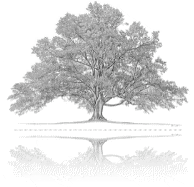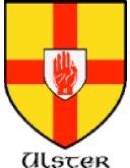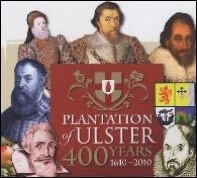Genealogy
The Scots-Irish (Ulster Scots)
The Scots-Irish (Ulster Scots)



From “The Scotch-Irish: A Social History” by James G. Leyburn
The term “Scotch-Irish” is an Americanism, generally unknown in Scotland and Ireland, and rarely used by British Historians. In American usage, it refers to people of Scottish descent who, having lived for a time in the north of Ireland, migrated in considerable numbers to the American colonies in the eighteenth century.
Millions of Americans have Scotch-Irish ancestors, for when this country gained its independence at least one out of every ten or fifteen Americans was Scotch-Irish.
The full story of the Scotch-Irish is more than a summary of their immediate reasons for leaving Ireland and the details of their life in America. If the Scotch-Irish were a distinctive people, it was because of their heritage and experiences. There are, indeed, three principal chapters in their story: their life in (the Lowlands of) Scotland, when the essentials of their character and culture were being shaped; their removal to northern Ireland and the action of events of their residence in that region upon their outlook on life; and their successive migrations to America, the nature of their life as pioneers, and an estimate of their importance to their adopted country.
----------------------------------------------------------------------------------------------------
From Wikipeda “Ulster Scots people”, April 26, 2008
Ulster-Scots are an ethnic group in Ireland, descended from mainly Lowland Scots who settled in the Province of Ulster in Ireland. Settlement first began in large numbers during the 17th century during the Plantation of Ulster, a planned process of colonization which took place in the reign of James I of England. The Ulster-Scottish identification is found throughout Ulster of partial Scottish descent, especially among Protestants. Ulster-Scots refers to the Scottish Presbyterian settlers of the 17th century. "Scots-Irish" is the modern form of the term for these same people who emigrated to the United States; Scotch-Irish is the traditional form.
Although population movement to and from the north-east of Ireland and the west of Scotland had been on-going since pre-historic times, a concentrated migration of Scots to Ulster occurred mainly during the 17th and 18th centuries.
The first major influx of Lowland Scots into Ulster came in the first two decades of the 17th century. Starting in 1609, Scots began arriving into state sponsored settlements as part of the Plantation of Ulster. This scheme was intended to confiscate all the lands of the Gaelic Irish nobility in Ulster, as punishment for their rebellion in the Nine Years War, and to settle the province with English and Scottish Protestant colonists. Under this scheme, a substantial number of Scots were settled, mostly in the south and west of Ulster, on confiscated land.
At the same time, there was an independent Scottish settlement in the east of the province, which had not been affected by the terms of the plantation. In east Down and Antrim, Scottish migration was led by James Hamilton, 1st Earl of Abercorn and Sir Hugh Montgomery, two Ayrshire lairds. This started in May 1606 and was followed in 1610.
During the Irish Rebellion of 1641, the native Irish gentry attempted to expel the English and Scottish settlers, resulting in severe inter-communal violence, massacres and ultimately leading to the death of around 4,000 settlers over the winter of 1641-42. The memory of these traumatic episode poisoned the relationship between the Scottish and English settlers and native Irish almost irreparably.
The Ulster-Scottish population in Ireland was further augmented during the subsequent Irish Confederate Wars, when a Scottish Covenanter army was landed in the province to protect the settlers from native Irish forces. After the war was over, many of the of their soldiers settled permanently in eastern Ulster. The war itself, part of the Wars of the Three Kingdoms, ended in the 1650s, with the Cromwellian conquest of Ireland. With Puritan zeal, Oliver Cromwell re-conquered Ireland. Defeating the Irish Catholic forces on behalf of the English Commonwealth, he and his forces employed methods and inflicted casualties among the civilian Catholic population that were long commonly considered by historians and the popular culture to be outside of the accepted military ethics of the day. This outcome resulted in an increased fear and resentment on the part of the native Catholic Irish that lasted generations. Under the Act of Settlement 1652, all Catholic owned land was confiscated and the Plantations, which had been destroyed by the rebellion of 1641, were restored. However due to the Scots' enmity to the English Parliament in the final stages of the English Civil War, English settlers rather than Scots were the main beneficiary of this scheme.
There was a generation of calm in Ireland thereafter until another civil war broke out, again on ethnic and religious lines, in 1689. Williamite war in Ireland (1689-91) was fought between Jacobites who supported the restoration of the Catholic James II to the throne of England and Williamites, who supported the Protestant William of Orange. The Protestant Ulster community, including the Scots, fought on the Williamite side in the war against Irish Catholics and their French allies. The fear of a repeat of the massacres of 1641 and of religious persecution under a Catholic monarch, as well as a wish to hold onto lands that had been confiscated from Catholic landowners were their principle motivating factors.
The Williamite forces, composed of British, Dutch and Danish as well as Ulster troops, ended Jacobite resistance by 1691, confirming the Protestant monopoly on power in Ireland. Their victories at Derry, the Boyne and Aughrim are still commemorated by the Orange Order today, because the Irish Protestant mythos maintains they had saved their community from annihilation or exile at the hands of the Jacobites.
Finally, another major influx of Scots into northern Ireland happened in the later 1690s, when tens of thousands of people fled a famine in Scotland to come to Ulster.
It was only after the 1690s that Scottish settlers and their descendants, the majority of whom were Presbyterian, gained numeric superiority in the province. Along with Catholic Irish, they were legally disadvantaged by the Penal Laws, which gave full rights only to Church of Ireland members (the state church), who were mainly the descendants of English settlers and native converts. For this reason, up until the 19th century, and despite their common fear of the dispossessed Catholic Irish, there was considerable disharmony between the Presbyterians and the Protestant Ascendancy of Ulster.
With the enforcement of Queen Anne's 1703 Test Act, which caused further discrimination against all who did not participate in the State Church (Church of Ireland and/or the Church of England), considerable numbers of Ulster-Scots migrated to the North American colonies throughout the 18th century.
Towards the end of the 18th century many Ulster-Scots Presbyterians ignored religious differences and, along with many Catholic Irish, joined the United Irishmen and participated in the Irish Rebellion of 1798 in support of republican and egalitarian ideals.


Copyright © Mike Perry, 2011
|


